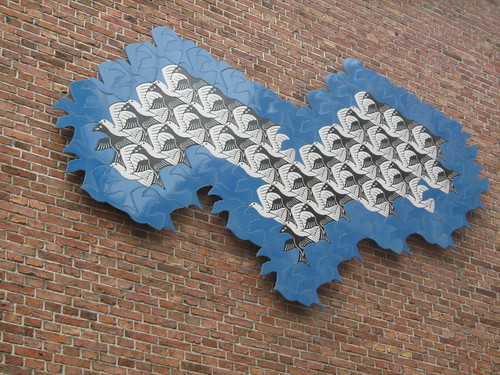
Cover image is courtesy of Bobolink Books
The subject of camouflage is multifaceted and holds a fascination for many people. For nearly thirty years Roy R. Behrens, writer, scholar, graphic designer and professor at the University of Northern Iowa, has become a leading authority on the relationship (the confluence) of art and camouflage. Professor Behrens’s newest publication, titled Ship Shape, is about World War I dazzle ship camouflage. The book is a compelling anthology of vintage essays, illustrations, and anecdotes discussing the theory of dazzle ship camouflage as a military strategy for optical confusion techniques and its correlation to art, graphic design, physics, and the natural sciences. When you looked at a dazzle camouflaged ship through the periscope of a menacing submarine you saw visual (figure & ground) ambiguity and uncertainty. Behrens is the editor and graphic designer of the book, published by Bobolink Books, Dysart, Iowa.
With this publication Behrens cleverly draws back the curtain to show readers some of the primary sources that he has referenced in his numerous public presentations and acclaimed publications on ship camouflage. This publication is the most comprehensive sourcebook about dazzle camouflage while the bibliography for further reading is impressively extensive. As Roy writes in the preface, “My own way of managing all this [material] is to pretend that I am witnessing in the pages — one could say, historically eavesdropping on — the ‘chatter’ of an era when ship camouflage was the subject of fervently heated exchanges — along with cubism, jazz, women’s suffrage, prohibition, costume parties, and baseball.” Ship Shape is specifically about dazzle ship camouflage with selections written during the World War I era. The exception to this is a delightful chapter on camouflage miscellany titled “Jazz, baseball, booze, and dazzle balls,” which is a collection, a “medley” as Behrens calls them of camouflage and popular culture. These written bits and pieces are also from the World War I period.
Obviously, when reading material from an earlier era the writing style can often highlight certain idioms and mannerisms, which now seem interestingly amusing. However, it becomes apparent in reading Ship Shape that the early pioneers of dazzle camouflage were highly motivated through their research and convictions that applying dazzle camouflage to cargo and troop ships in wartime could unquestionably help save human lives and cargo from sly enemy submarine torpedoes. Perhaps an analogy might be that the World War I camoufleurs were like the biblical character Noah who built an enormous “life boat” as a place of safety from impending doom.
As with all of Behrens’s books, Ship Shape is instructive and entertaining. As you read the essays, the editor’s comments, and look at the illustrations you will always find a new perspective. This book can be characterized by it’s many salient features. For instance, the photographs highlighting British painter Edward Wadsworth are stunning and alone are worth the cost of the book.
Read More......
















































